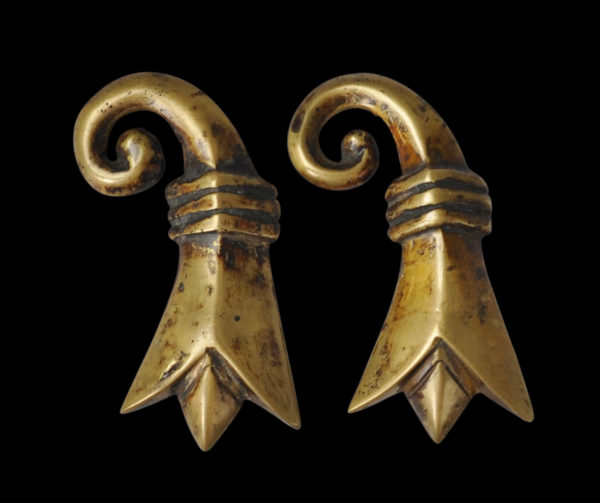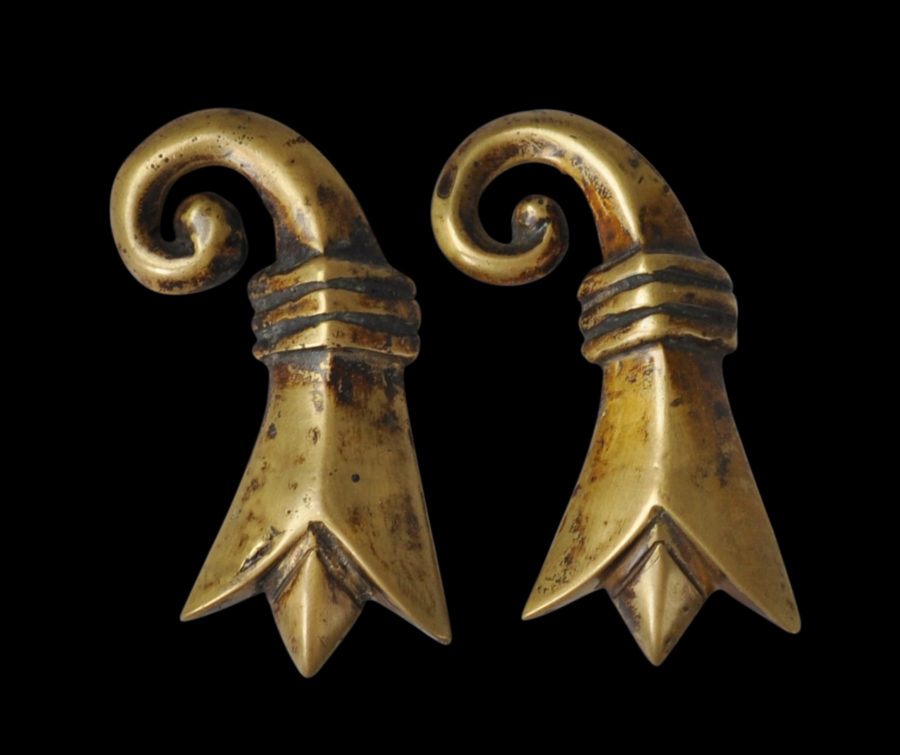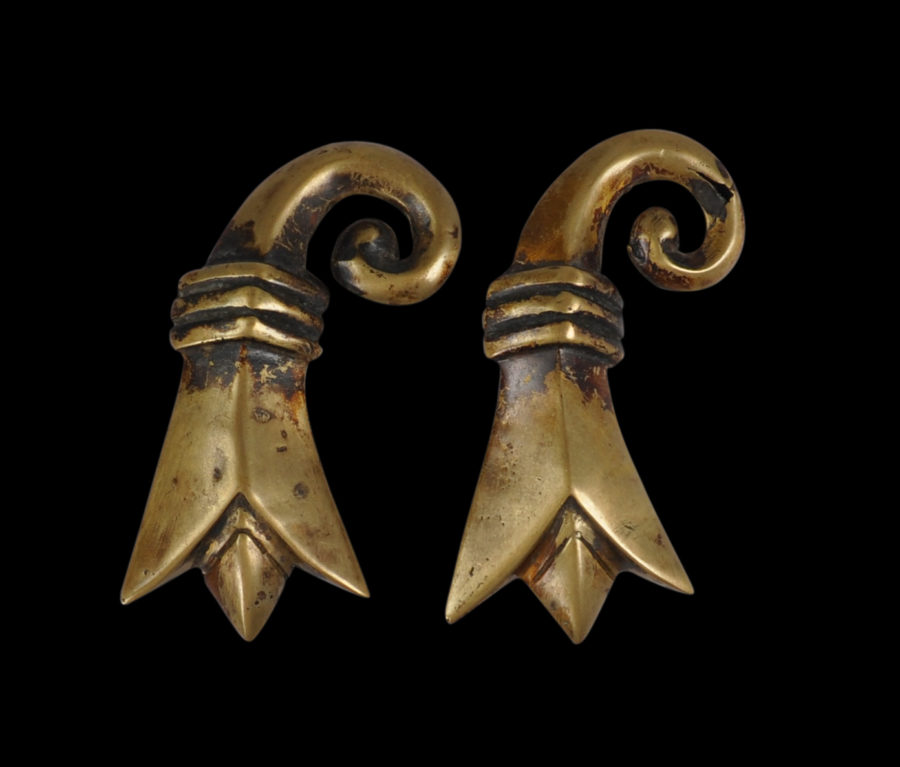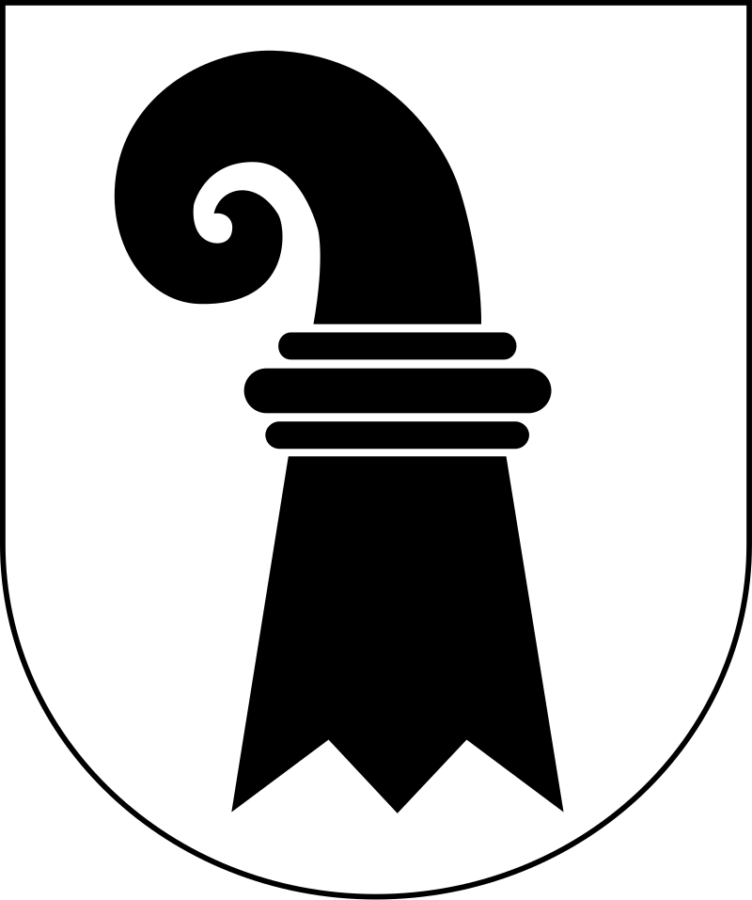Enquiry about object: 4226
Rare Dayak Brass Ear Ornaments Showing Swiss-Lutheran Missionary Influence from Basel
Dayak People, Sarawak, Borneo, Malaysia early 20th century
lengths: 8cm & 8.3cm, combined weight: 99g
Provenance
Acquired in the UK, from the estate collection of Dr George Yuille Caldwell (1924-2016). Dr Caldwell, an English-born physician moved to Singapore in the 1950s, from where he built up a collection of mostly Borneo-related textiles and other ethnographica.
This very unusual and pleasing pair of brass ear ornaments are in the form of pendant flower buds – based on the city emblem of Basel.
They are from the Dayak people of the Malaysian state of Sarawak on the island of Borneo, and were collected in the 1950s-1960s.
Their form is based on the emblem for Swiss city of Basel. The Basel emblem looks like a flower bud when worn in the ear lobe as a Dayak person, but is based on a Bishop’s pastoral staff or crook and is called the Baselstab. (See the last image for Basel’s city emblem.)
The links between Basel and the Dayaks comes from Swiss Lutherans who evangelised among the Dayaks in the 19th century.
For example, the Rheinische Missiongesellschaft zu Bremen (RMG) started missions in Borneo in the first half of the 19th century among the Dayak Ngaju and Maanyan groups. They did not make great inroads and after World War One, the work of the RMG was taken over by the Basel Mission. It is with this direct link that we believe this rare pair of Dayak ear ornaments was made.
Large Ear pendants allowed male and female Dayak tribes-people to stretch their earlobes to beyond their shoulders. This was achieved by using increasingly heavy ear ornaments. Thereafter, great care was needed to prevent the ear lobe from breaking. Women tended to stretch their ear lobes much more than men: it was considered effeminate for a Dayak man to have lobes stretched beyond the shoulders. Today, the practice of elongating the earlobes has largely died out among the Dayaks.
Such ornaments in brass were a sign of prestige and power.
The pair have a good patina and rounded contours from age and handling. One is slightly larger than the other in keeping with their having been fabricated by hand. They seem to be hollow but are of thickly-walled metal so they do have reasonable weight.
References
Brinkgreve, F., & D.J. Stuart-Fox (eds), Living with Indonesian Art: The Frits Liefkes Collection, Rijksmuseum Volkenkunde, 2013.
Chin, L., Cultural Heritage of Sarawak, Sarawak Museum, 1980.
Hoek, C., et al, Ethnic Jewellery: From Africa, Asia and Pacific Islands, Pepin Press, 2004.
Richter, A., The Jewelry of Southeast Asia, Thames & Hudson, 2000.
Rodgers, S., Power and Gold: Jewelry from Indonesia, Malaysia and the Philippines, The Barbier-Mueller Museum, Geneva, 3rd ed. 1995.





